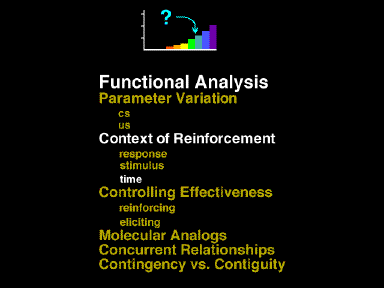 Slide 2-48
Slide 2-48

 Slide 2-48
Slide 2-48
The temporal context of reinforcement carries substantial explanatory weight in most theoretical perspectives. For example, the "scallop" in operant theory is thought to be due to the temporal stimuli becoming more like those at the moment of reinforcement in each sucessive portion of the interval.
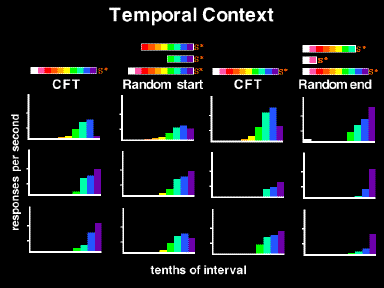 Slide 2-49
Slide 2-49
This procedure varied the implict temporal stimuli while holding the explicit clock stimuli constant. The clock stimuli were constant with respect to the end of the interval or with respect to the beginning of the interval. Each of several birds were consecutively exposed to the 4 procedures of this experiment. Surprisingly the random end procedure maintained increasing responding across the interval just like the CFT. This occured even though the stimuli did not reliably specify the time to reinforcement.
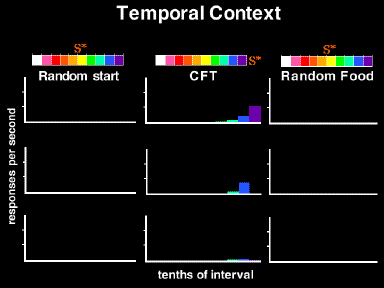 Slide 2-50
Slide 2-50
The prior procedure had confounded the stimulus position with probability of reinforcement. The probability of reinforcement had been systematically correlated with key color by randomly ending the clock but always restarting it at the beginning of the sequence. In this experiment, the key color was not systematically correlated with the probability of food because food was presented following a random number of stimuli, but restared at the next consecutive stimulus. The present experiment demonstrated 1) that the prior results had been due to the probability of reinforcement asociated with each color and 2) that stimuli that provide information concerning the time since the prior food presentation do not control increasing rates of responding. This experiment demonstrated this by exposing birds to a Random Food schedule followed by a Clocked Fixed Time schedule and finally a Random Food schedule.
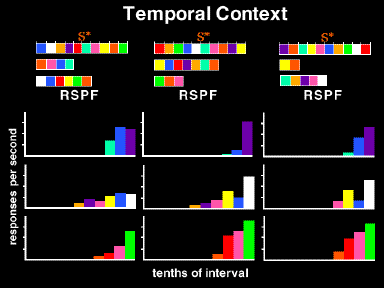 Slide 2-51
Slide 2-51
This interpretation was proven by exposing birds to Random Stimuli Probabilistic Food schedules (RSPF). Each of 3 birds was consecutively exposed to three procedures with different randomly presented stimuli with a specific probability of food associated with each stimulus, the color with the highest probability is plotted furthest to the right, each bar to the left has a lower probability of food. If each of a random series of stimuli is reliably followed by reinforcement with a different probability, then the rate of responding to each stimulus is a function of the probability of reinforcement.
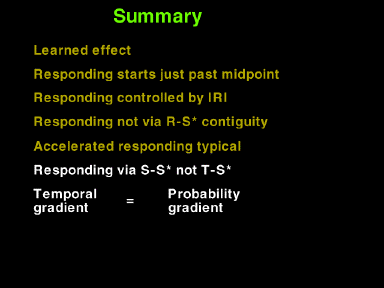 Slide 2-52
Slide 2-52
In sum, responding was under the control of the relationship of the stimuli with the reinforcer. Additionally, the time to reinforcement and the probability of reinforcement similarly controlled responding.
Full text and figures of a journal article on this topic is available at:
***** SERIAL CONDITIONING AS A FUNCTION OF STIMULUS, RESPONSE,
AND TEMPORAL DEPENDENCIES
Date Last Reviewed : May 26, 2003